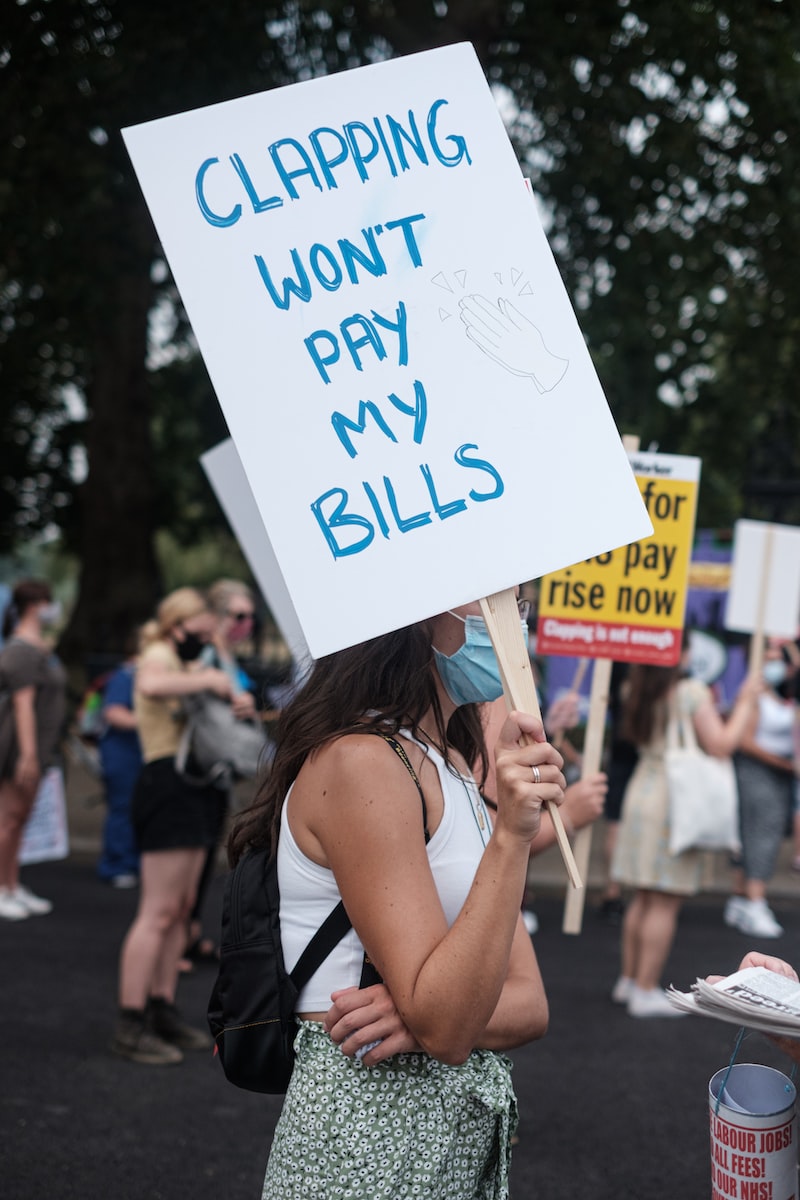Table of Contents
Are you curious about wage disparities across different states? Let’s dive into the intriguing world of minimum wages and explore which states offer the highest and lowest pay rates. Brace yourself for some eye-opening facts!
When it comes to minimum wage, not all states are created equal. Some states have taken the initiative to provide workers with a higher standard of living, while others have opted for a more conservative approach. So, where does your state stand?

In the realm of high minimum wages, few states can compete with California. This sunny West Coast state boasts one of the highest minimum wage rates in the nation. With a current minimum wage of $15 per hour, Californians working at the bottom rung of the job market have reason to rejoice. This generous wage floor helps ensure that workers can meet their basic needs and enjoy a decent quality of life.
Moving eastward, we find ourselves in the Empire State – New York. The Big Apple is famous for its iconic skyline and bustling streets, but it’s also recognized for its commitment to fair wages. New York has implemented a tiered system, considering factors such as location and business size, resulting in varying minimum wage rates. In New York City, the minimum wage stands at $15 per hour, while other parts of the state have slightly lower rates.
Now, let’s shift our attention to the states on the opposite end of the spectrum. If you’re headed to the South, you might encounter some of the lowest minimum wages in the country. States like Georgia and Wyoming have minimum wage rates of just $7.25 per hour, the federal minimum wage. These states have chosen to adhere to the federal standard rather than implementing a higher rate specific to their region.
As we explore the wage landscape, it’s important to remember that minimum wage policies are constantly evolving. Some states have already begun increasing their minimum wages incrementally to keep pace with inflation and the rising cost of living. The battle for fair wages rages on, with advocates
and policymakers working to bridge the gap between the highest and lowest minimum wages.So, whether you find yourself in a state with a generous minimum wage or one that lags behind, understanding the wage dynamics can help you navigate the job market better. After all, everyone deserves a fair wage for an honest day’s work, regardless of where they live.
Battle of the Wages: Exploring the States with the Highest Minimum Wage Rates
Are you curious about the battle of wages and which states in the United States offer the highest minimum wage rates? Well, let’s dive into this intriguing topic and explore where workers are earning more.
When it comes to minimum wage, each state has the power to set its own rate. As a result, there is significant variation across the country. Some states believe in providing a higher standard of living for their residents, while others prioritize different economic factors.
If you’re looking for the top contenders in the race for the highest minimum wage, you’ll find yourself drawn to states like California, Washington, and Massachusetts. These states have been at the forefront of the fight for fair wages, consistently raising their minimum wage rates above the federal level.
California, known for its vibrant economy and high cost of living, currently boasts one of the highest minimum wage rates in the nation. Workers in the Golden State are entitled to a minimum wage of $15 an hour. This increase aims to address the challenges faced by low-income workers in keeping up with rising living costs.
Similarly, Washington state also leads the pack with its minimum wage of $14.49 per hour. The Evergreen State recognizes the importance of fair compensation and has taken significant steps to ensure that workers can thrive financially.
Moving to the East Coast, we find Massachusetts shining as another state committed to promoting a higher minimum wage. Employees here earn a minimum of $13.50 per hour, providing them with greater financial stability and security.
These states demonstrate the positive impact of higher minimum wages on workers’ lives. By offering higher rates, they foster a sense of dignity for individuals who rely on these wages to make ends meet.
Tale of Two Economies: Which States Have the Lowest Minimum Wages in America?
In the vast and diverse landscape of the United States, economic conditions can vary greatly from state to state. One crucial aspect that showcases this disparity is the minimum wage. It’s fascinating to explore how different states approach this fundamental pillar of worker protection. So let’s embark on a journey through the tale of two economies and discover which states have the lowest minimum wages in America.
Picture this: you’re standing on the edge of the economic spectrum, peering into the states with the most modest minimum wages. As you peer closer, you’ll find a handful of states that stand out. These states have set their minimum wage at levels lower than the federal minimum wage of $7.25 per hour. Yes, you heard it right: lower than the baseline set by the federal government.
One such state is Wyoming, aptly known as the Cowboy State. With its picturesque landscapes and wide-open spaces, Wyoming may evoke images of freedom and independence. However, when it comes to minimum wage, the state sets it at a meager $5.15 per hour, making it the state with the lowest minimum wage in the nation. It’s like trying to lasso a wild stallion with a piece of string; the gap between earnings and living expenses can be quite challenging to navigate.
Another state that finds itself on the lower end of the minimum wage spectrum is Georgia, the Peach State. While Georgia boasts a rich history and southern charm, its minimum wage sits at $5.15 per hour, mirroring Wyoming’s rate. In Georgia, working hard for little pay can feel like trying to harvest ripe peaches without climbing the tree. It’s a daunting task that makes financial stability seem out of reach for many.
As we delve into the tale of these two economies, it becomes evident that the minimum wage plays a significant role in shaping livelihoods and opportunities. While Wyoming and Georgia might offer their residents breathtaking vistas and cultural gems, the struggle to make ends meet on such low wages can cast a shadow over their economic landscapes.
So, as we conclude this glimpse into the states with the lowest minimum wages in America, let us reflect on the complexities of our nation’s economic tapestry. These two states serve as reminders that while beauty and opportunity abound, the disparities in minimum wages can be a hurdle for those trying to build a stable foundation for a brighter future.
Inequality on the Paycheck: Examining the States with Widest Wage Gaps

Have you ever wondered why some states in the United States have wider wage gaps than others? It’s a complex issue that affects millions of workers across the nation. In this article, we will delve into the details of the states with the widest wage gaps and explore the factors contributing to this inequality.
One state that stands out when it comes to wage gaps is California. Despite being one of the wealthiest states in the country, it also has one of the highest wage disparities. The tech industry in Silicon Valley plays a significant role in this discrepancy. While highly skilled workers in the technology sector earn substantial salaries, those in lower-paying jobs struggle to make ends meet, creating a substantial gap between the top earners and the rest of the workforce.
Another state grappling with wage inequality is New York. The Big Apple may be known for its towering skyscrapers and vibrant culture, but it is also home to one of the most pronounced wage gaps in the nation. The finance and banking sectors dominate New York’s economy, providing lucrative opportunities for those at the top. However, individuals in service industries, such as hospitality or retail, often receive significantly lower wages, widening the income disparity within the state.
Moving to the Midwest, Illinois is another state where wage inequality is prevalent. Chicago, the state’s largest city, boasts a diverse economy encompassing industries like finance, manufacturing, and healthcare. Nevertheless, the distribution of wealth within these sectors is far from equitable. High-ranking executives and professionals in lucrative fields can earn substantial salaries, while blue-collar workers face lower wages, perpetuating the wage gap.
What accounts for these disparities? Several factors contribute to the wage gaps in these states. The concentration of high-paying industries, such as technology or finance, plays a crucial role. Additionally, differences in education levels and skill sets across regions further exacerbate the wage inequality.
Money Matters: How Do States with High Minimum Wages Impact Workers and Businesses?
Imagine a world where every worker could earn a decent living wage, allowing them to support themselves and their families without struggling to make ends meet. That’s the vision behind the concept of raising the minimum wage, an issue that has sparked debates and discussions across the United States. In this article, we will explore how states with high minimum wages impact both workers and businesses.

When a state implements a higher minimum wage, it aims to provide workers with better financial stability and improve their overall quality of life. By increasing the minimum wage, employees can earn more money for performing the same job, giving them greater purchasing power. This means they can afford better housing, healthcare, education, and other essential needs, ultimately reducing income inequality.

For workers, a higher minimum wage also means increased motivation and job satisfaction. When individuals earn a fair wage, they feel valued and appreciated by their employers. This boosts morale, productivity, and loyalty, creating a positive work environment. Furthermore, it reduces the need for employees to rely on government assistance programs, resulting in fiscal savings for taxpayers.
On the flip side, businesses often express concerns about the potential negative impacts of high minimum wages. One major worry is the increased labor costs, which can strain small businesses with limited resources. Some argue that higher wages lead to reduced hiring or even job cuts, as companies may struggle to afford paying all their employees the new minimum wage. However, studies have shown mixed results on the employment effects of minimum wage increases, with some indicating minimal impact on job numbers.
It’s important to note that the impact of high minimum wages on businesses can vary depending on the industry and geographical location. Sectors that heavily rely on low-wage workers, such as retail and hospitality, may face more significant challenges in adapting to higher labor costs. Conversely, industries that already pay above the minimum wage might experience fewer disruptions.
states with high minimum wages seek to improve the lives of workers by providing fair compensation and reducing income inequality. While there are concerns about the potential negative effects on businesses, the overall impact varies depending on industry and location. By carefully considering the needs of both workers and businesses, policymakers can strive for a balance that ensures economic prosperity while also valuing the dignity and well-being of workers.




